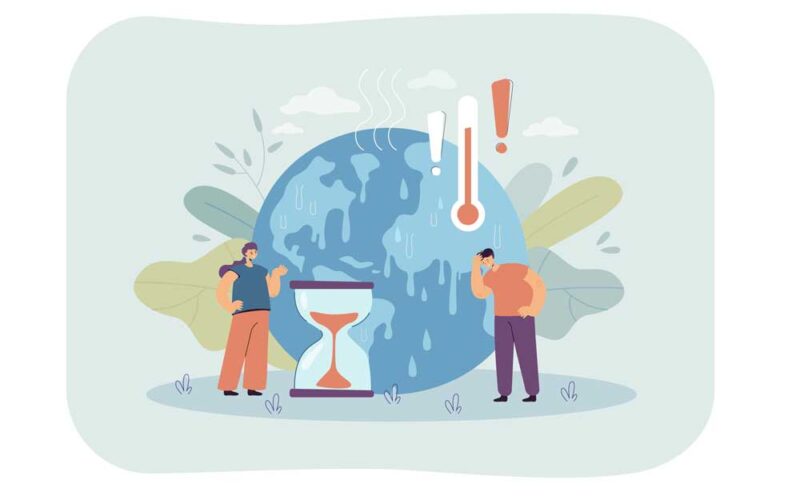In a world facing the escalating severity of global warming. Climate change is no longer a distant threat—it is a reality that directly impacts our daily lives. Extreme weather events such as heatwaves, droughts, floods, and wildfires are occurring more frequently across the globe, affecting human health, livelihoods, and housing. However, the impacts of the climate crisis are not felt equally. Social factors such as income, location, gender, and generation determine how severely people are affected and how well they can respond(O’Neill., 2002).
Rather than being a great equalizer, the climate crisis is deepening existing social disparities and creating new forms of inequality. As a result, the climate justice is gaining attention, framing climate change not merely as an environmental issue but as a matter of social equity and human rights. This article explores the various dimensions of social inequality brought about by the climate crisis and considers policy-level and international efforts to address them(Boer., 2003).
1. Unequal Distribution of Climate Impacts
While climate change affects the entire planet, its consequences are not evenly distributed. Low-income countries and geographically vulnerable regions—such as coastal and mountainous areas—are more exposed to climate disasters and have fewer resources to recover. Wealthy nations often have systems and infrastructure to mitigate these risks, whereas developing countries face secondary crises like food insecurity, disease, and forced migration(DeMott et al., 2010).
2. Inequality in the Green Transition
Efforts to reduce carbon emissions and shift to renewable energy can also lead to new inequalities. Adopting green technologies like electric vehicles, solar panels, and hydrogen power often favors the middle and upper classes. At the same time,low-income communities struggle to afford or access these solutions. This phenomenon, sometimes called “green inequality,” highlights how climate policy can unintentionally widen social and economic gaps(Schäfer., 2012).
3. Intergenerational Inequality
Climate change also presents a clear case of intergenerational injustice. The environmental damage caused by previous generations during industrialization is now a burden future generations must bear. Today’s youth, who did not contribute to the current crisis, are the ones who will face its most severe long-term consequences. Their quality of life, economic stability, and health are all at risk due to delayed or insufficient climate action(Rezai and Van der Ploeg., 2016).
4. Climate Migration and Displacement
An increasing number of people are being forced to migrate due to the effects of climate change. Known as “climate refugees,” these individuals often lose their homes and livelihoods to rising sea levels, droughts, or disasters. Such forced migration is deeply. Entangled with other issues like poverty, unemployment, and lack of access to education. Additionally, international law does not yet recognize climate refugees as a protected group, leaving them highly vulnerable to exploitation and political conflict(Rigaud et al., 2018).
The climate crisis is a powerful magnifier of structural inequalities in our societies. Those already marginalized—such as low-income populations, developing countries, women, youth, and future generations—bear the brunt of climate-related hardships. Without specific support for these vulnerable groups, meaningful climate action will remain incomplete.
Climate policies must go beyond carbon reduction and technological innovation to ensure social equity. Key strategies include guaranteeing equal access to disaster relief, protecting disadvantaged communities during the energy transition, and establishing legal protections for climate migrants. On a global scale, countries must share resources and responsibility fairly, recognizing that those least responsible for climate change often suffer its worst effects.
Ultimately, addressing the climate crisis is not just an environmental imperative—it is a moral one. A fair and sustainable response must ensure that everyone, regardless of their background, has the means to adapt and thrive in a changing world. Climate justice is not optional; it is essential for a shared and livable future(Pierrehumbert., 2019).
Reference
Boer, G.J. and Yu, B. (2003). Climate sensitivity and climate state. Climate Dynamics, 21(2), pp.167–176. doi:https://doi.org/10.1007/s00382-003-0323-7.
DeMott, P.J., Prenni, A.J., Liu, X., Kreidenweis, S.M., Petters, M.D., Twohy, C.H., Richardson, M.S., Eidhammer, T. and Rogers, D.C. (2010). Predicting global atmospheric ice nuclei distributions and their impacts on climate. Proceedings of the National Academy of Sciences, 107(25), pp.11217–11222. doi:https://doi.org/10.1073/pnas.0910818107.
O’Neill, B.C. (2002). CLIMATE CHANGE: Dangerous Climate Impacts and the Kyoto Protocol. Science, 296(5575), pp.1971–1972. doi:https://doi.org/10.1126/science.1071238.
Pierrehumbert, R. (2019). There Is No Plan B for Dealing with the Climate Crisis. Bulletin of the Atomic Scientists, [online] 75(5), pp.215–221. doi:https://doi.org/10.1080/00963402.2019.1654255.
Rezai, A. and Van der Ploeg, F. (2016). Intergenerational Inequality Aversion, Growth, and the Role of Damages: Occam’s Rule for the Global Carbon Tax. Journal of the Association of Environmental and Resource Economists, 3(2), pp.493–522. doi:https://doi.org/10.1086/686294.
Rigaud, Kanta Kumari, Alexander, Jones, B., Bergmann, J., Clement, V., Ober, K., Schewe, J., Adamo, S.B., McCusker, B., Heuser, S. and Midgley, A. (2018). Groundswell : Preparing for Internal Climate Migration. Academic Commons. [online] doi:https://doi.org/10.7916/D8Z33FNS.
Schäfer, M.S. (2012). Online communication on climate change and climate politics: a literature review. Wiley Interdisciplinary Reviews: Climate Change, 3(6), pp.527–543. doi:https://doi.org/10.1002/wcc.191.
